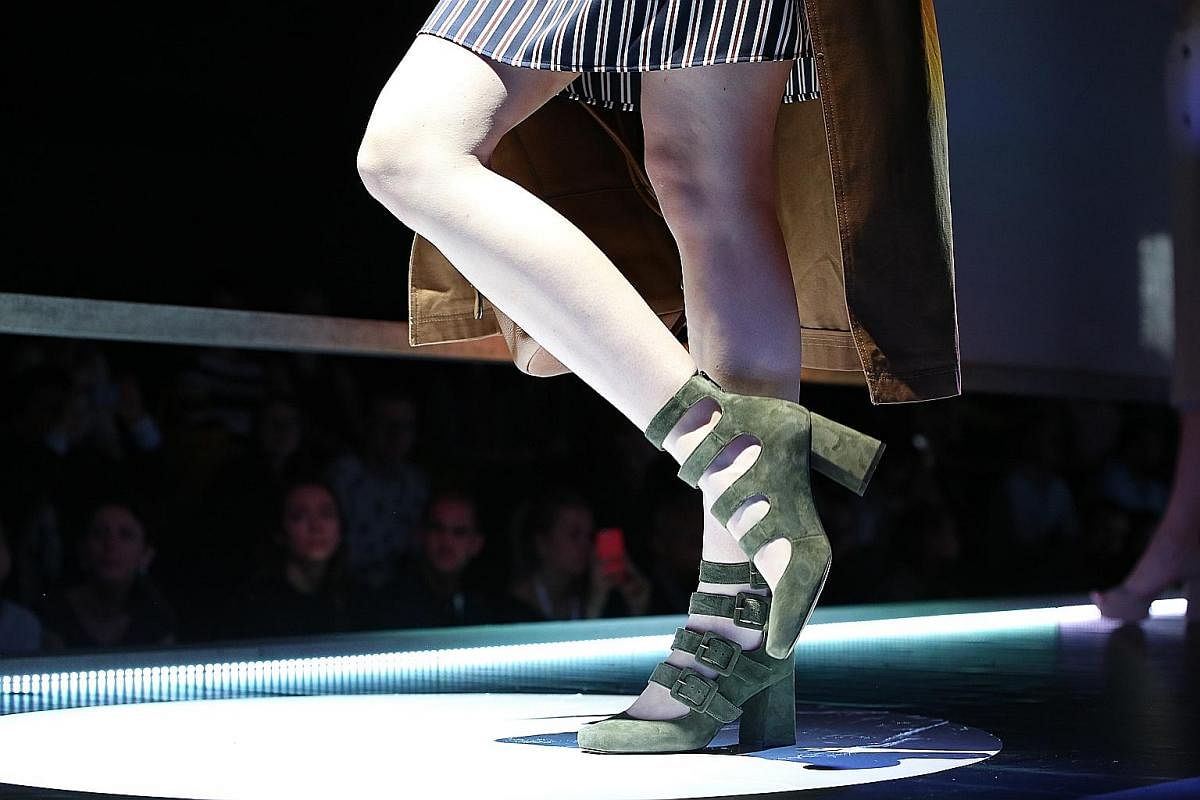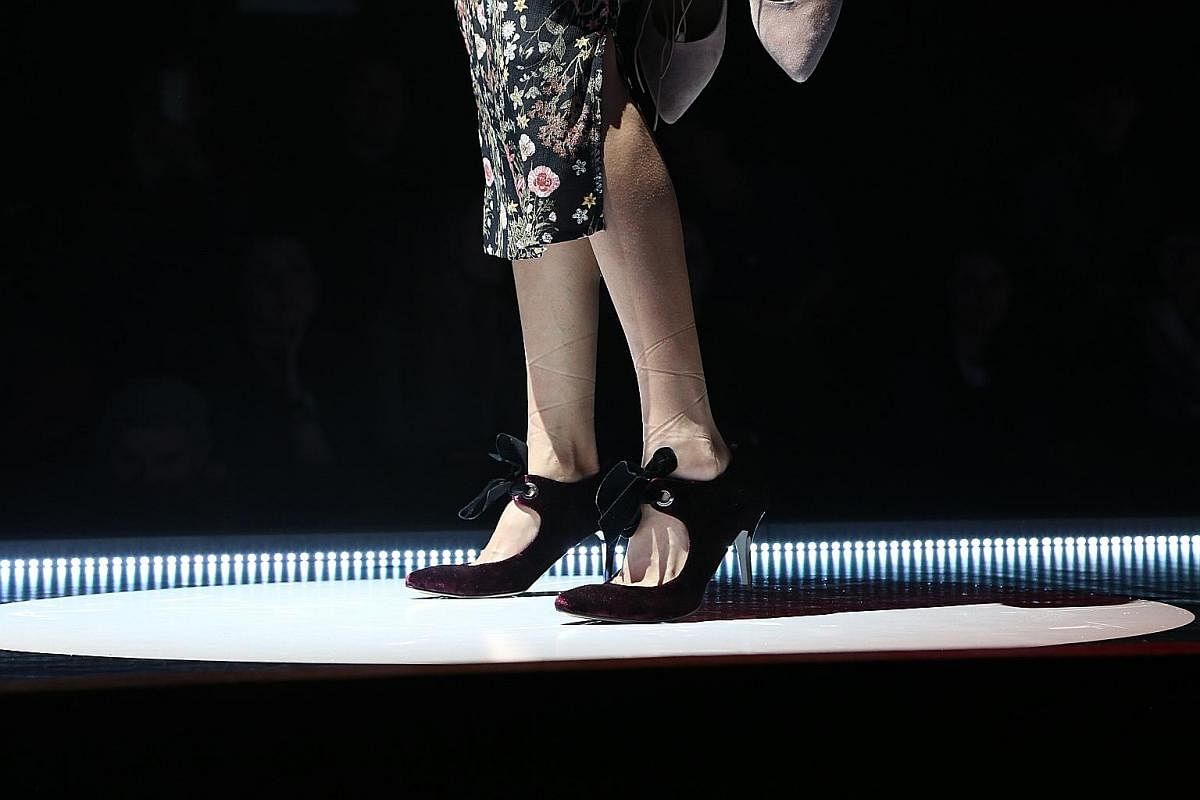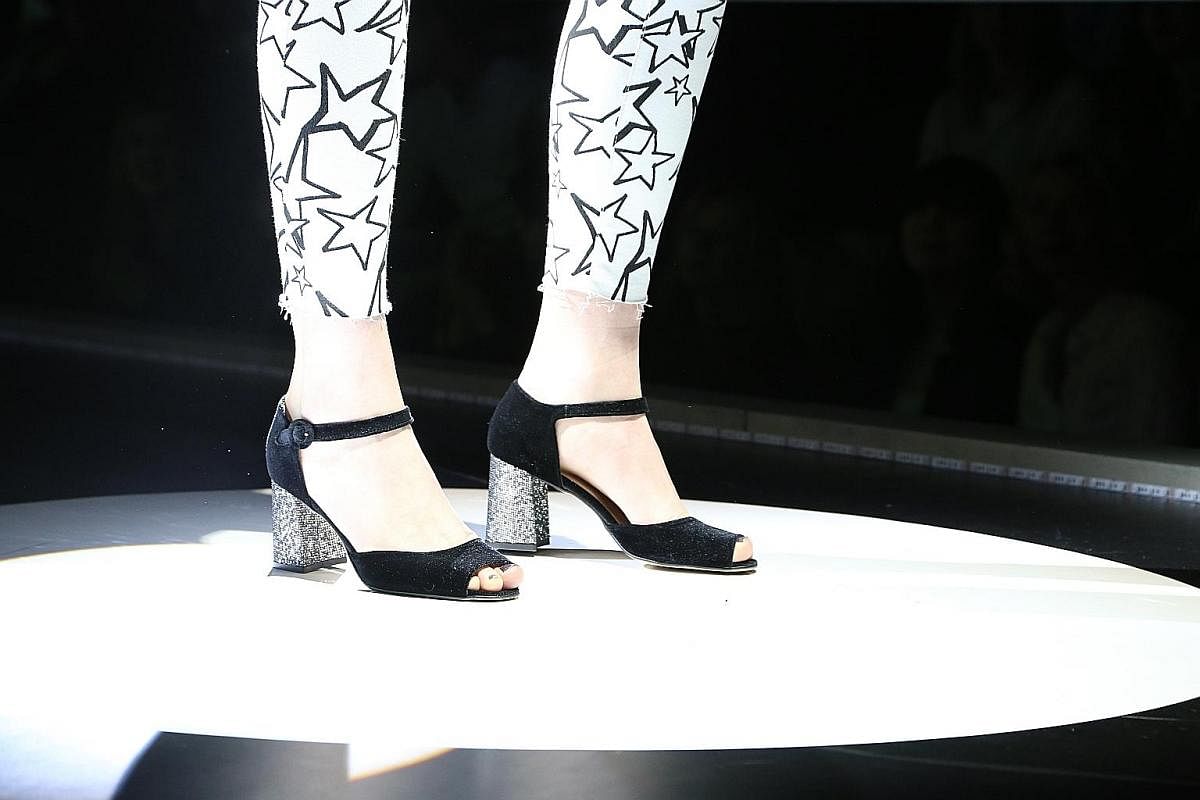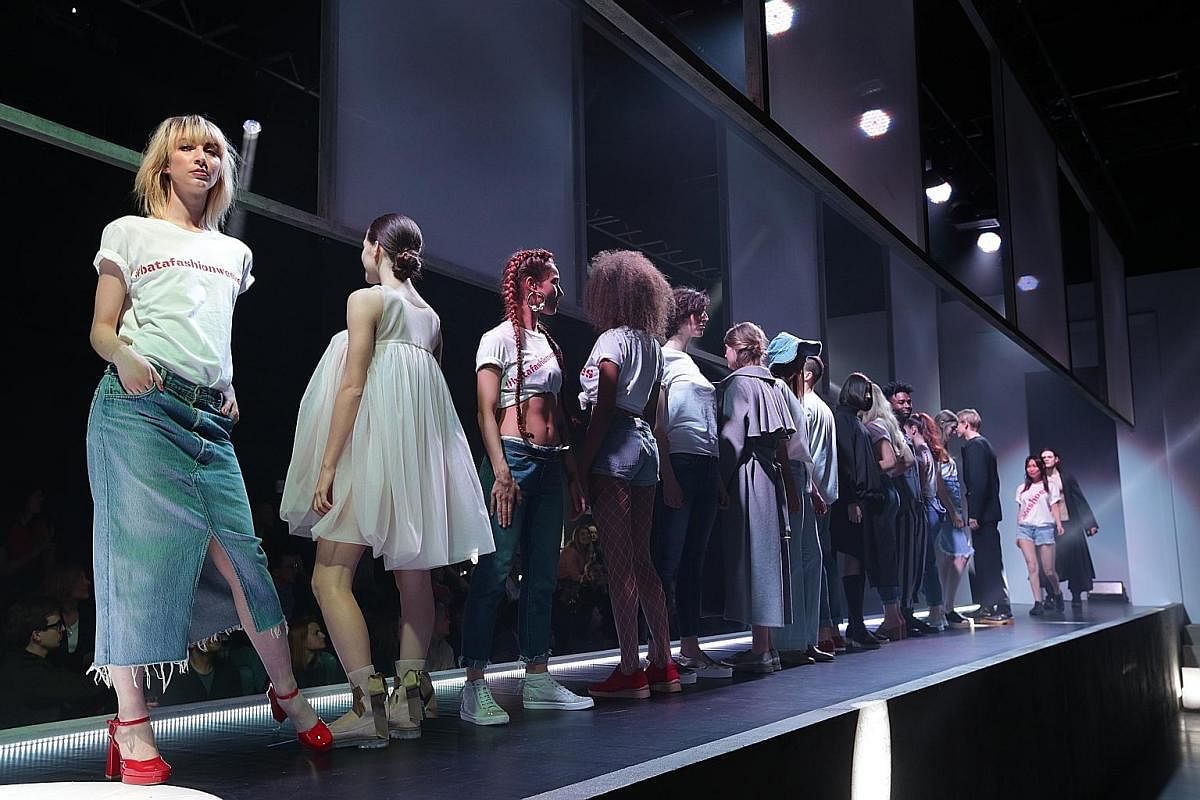-
5 things you may not know about Bata
1 Bata is a family business. The current chairman is Thomas G. Bata, grandson of founder Tomas Bata, who established the company 123 years ago. The chairman's son, Thomas A. Bata, is the brand's chief marketing officer.
2 The company was recognised in 2004 by Guinness World Records as the world's largest shoe manufacturer and retailer.
3 It has its own university. Named after the founder, Tomas Bata University was established in Zlin, Czech Republic, in 2001. There are six faculties offering programmes in technology, humanities and healthcare, for instance, up to the PhD level.
4 According to the brand, more than one million customers shop at Bata every day. It has more than 5,200 stores in more than 70 countries, including 42 in Singapore.
5 Bubblegummers, Bata's children's shoe line, has interesting name origins. According to chairman Thomas G. Bata, when the rubber shoes were first made, they smelt really bad. A Bata employee poured perfume on them to counter the stench. This resulted in a fruity bubblegum scent.
-
Style picks

Brown wide heel Coachella inspired sandal, $49.95, in Bata stores next week.
Black microfibre and lambskin 4-inch heel, $59.95, available in Bata stores.

Geometric laser-cut sneaker, $39.95, available in Bata stores in mid-May.

Brown leather wingtip highcut shoe from the Made In Italy collection, $189, in Bata stores next week.

Navy blue leather sneaker with interwoven pattern from Bata's Made In Italy collection, $139, in Bata stores.

Bata Bullets collaboration with French Designer Julien David, $99, available at the Actually Store in Orchard Gateway from Monday.
Cool step forward: Bata shows it's not just school shoes
Czech label Bata, long linked to school shoes for children here, is getting an image makeover, injecting swagger and fun into its shoes






"First to Bata, then to school." That nostalgic slogan from Bata triggers flashbacks of school days and the white canvas shoes that children wore in decades past.
The neighbourhood footwear brand is now modernising its image, moving with the times from old- school to cool. Rather than just dressing the feet of primary school students and mature shoppers, the staid Czech label, now 123 years old, is pumping a little swagger in its shoes.
Think contemporary sneakers with floral embroidery, sleek high-heeled pumps in metallic rose gold and, for men, dapper hightop brown leather shoes with a wingtip pattern.
The family-owned company staged its first fashion weekend in Prague two weeks ago to kick off its rejuvenation drive.
The two-day showcase featured fashion shows, exhibits of its heritage products and live demonstrations of shoemaking techniques.
In one show, the models changed their shoes on the runway, suggesting that flipping the footwear can totally transform a look. A model in a red power suit swopped her black stilettos for white sneakers with metallic details. This changed her powerful office look to a playful, sporty get-up.
All the shows were trendy, upbeat and surprisingly fun.
The dapper direction is spearheaded by chief executive officer Alexis Nasard, who joined Bata in April last year.
At the event, he highlighted Bata's new manifesto, "Me & Comfortable with it". He says the label will offer sexy, comfortable and surprisingly affordable shoes to a younger target group of women and men of all shapes and sizes.
"We refuse the dictate that a woman in the 21st century has to choose between being gorgeous, beautiful and comfortable.
"We refuse the dictate that style has to be obscenely expensive and we refuse the dictate that for a woman to be beautiful and feel good about herself, she needs to be 180cm tall and 60kg light."
Lebanon-born Mr Nasard, who has a Master of Business Administration from the University of California, Berkeley, was previously the global chief marketing officer at beer brand Heineken and a general manager at multinational manufacturer Procter & Gamble.
Speaking to The Straits Times during the event, president of Bata Asia Pacific Roberto Longo admitted that in the past, the label did not pay as much attention to style, but "focused on more everyday shoes".
The 59-year-old Italian, who has been with Bata for 40 years, says today's consumer is more sophisticated, affluent and more in touch with fashion trends.
"Today, every lady has at least 20 pairs of shoes in her wardrobe. So we said, we would like to be present in that wardrobe with Bata shoes."
Mr Longo says the brand decided to have its own fashion weekend to announce to the world that Bata is changing and aligning itself with the current demands of the younger customer.
"We realise that some were no longer shopping at Bata. They were getting out to other stores because they were not finding what they wanted here. This repositioning is an invitation to come back to Bata."
Mr Longo says that the brand, long regarded in Singapore as the go-to supplier of school shoes and footwear for the more mature set, wants to focus on working adults who are aged 20 to 35.
Bata is so serious about catering to this market segment that it has created two characters that embody its new target customer.
These characters, the creation of Mr Nasard, have been named Angela and Roberto. They are used to guide Bata's shoe designs, marketing campaigns and the way sales staff will be trained to approach customers.
Mr Longo, who says the male character was not named after himself, notes that Angela and Roberto are between the ages of 20 and 35, working and possibly have young children. The same two personas are used all over the world, with the characters in each country having some distinctions.
"We keep these two individuals in mind when we design collections. We ask ourselves, 'what do they need?'. When they go to work, go for parties in the evening, when they spend the weekend walking about Singapore, what shoes do they need at every stage, every day?"
Mr Longo, who is based in Singapore, says it is the most evolved market in South-east Asia.
"It is much more influenced by the European styles - what happens on the runways there. The acceptance of new trends is also faster in Singapore."
On the impetus for rebranding, he says: "We realised that today's working women want to be sexy. And shoes are a part of the sexy feminine image. But we saw that most of the time, sexy shoes are not comfortable. So our mission is to combine the two. We want to make sexy comfortable while making comfortable sexy."
Bata was founded in Zlin, a city in south-eastern Moravia in the Czech Republic, in 1894 by Tomas Bata. He organised operations into autonomous workshops and departments, creating an efficient production, distribution and marketing system which allowed Bata to expand.
By 1912, the company was employing 600 full-time workers. By 1939, it had established its presence in more than 30 countries.
Its global spread continued even as the company was handed down to younger generations of the Bata family.
Bata entered Singapore in August 1931, planting its first store at Capitol Building in Stamford Road. The label now has 42 locations here.
Shoes are made in various countries, including Indonesia, India, Italy and China.
Though the brand declines to release sales figures, Bata has been consistently opening new stores. It opened more than 800 concept stores internationally in the last four years. Last year, in Singapore, Bata opened six new stores.
Today, it has more than 5,200 retail stores in over 70 countries.
The brand also intends to change the look of its stores. It is putting aside the cluttered and old-fashioned image for wider shelves to better present shoe collections.
There will be structured themes - such as a section dedicated to ballet flats of different colours and another featuring floral-themed sneakers - to guide customers along each shoe range.
Stores will also be more spacious to create a better ambience.
Mr Longo says these changes were first tested in Singapore in Bata's new Westgate location which opened in February this year.
Tough road ahead even with rebranding
The label is also renovating and expanding its store in VivoCity to match its rebranding message. The store will reopen next month.
"The store in VivoCity will have screens that showcase fashion trends and information about the latest Bata shoe technologies," says Mr Longo.
Technologies include Bata Insolia, which helps to boost the comfort of high-heeled shoes. According to Bata, the patented weight- shift technology distributes weight equally between the toe and the heel areas.
Bata sales staff have been trained to better serve younger customers who want better service, for instance, sharing knowledge about shoe benefits like Insolia.
He adds: "We realised that Angela and Roberto would want to be served by professionals who can help them to find the right fit of shoe and understand the material of the shoes."
But will this be an uphill climb for a brand with a conservative image so entrenched in people's minds?
Mr Longo says no. "The store at Westgate with the new look has been very well received."
The Bata veteran also makes it clear that the company will not alienate its current customers.
"Now we see that a dominant segment of the market are those who are 20 to 35. But we will also never forget the customers that have patronised our stores all these years."
Price points will remain the same, for instance, in the range of $30 to $60.
Retail experts agree that the label needs to rebrand if it is to stay relevant and relate to the elusive millennial crowd.
Dr Lewis Lim, associate professor of marketing practice at Nanyang Business School, says: "The new millennial generation has a very different concept of 'cool footwear' and the previous Bata brand image doesn't fit the modern definition of 'cool'."
Bata needs to refresh its image to remain relevant in the competitive and cluttered marketplace, he says.
National University of Singapore associate professor of marketing Ang Swee Hoon says the rebranding also targets a segment that spends more on shoes and clothing.
"The younger generation wants more shoes - whether for work or for leisure. And for those who have not bought a house yet, they have no mortgage loans to consider. Hence disposable income is relatively high."
As to whether the rebranding will succeed, experts say Bata may have to do more. Dr Lim says it cannot simply be about introducing trendy shoe designs.
He says: "Young consumers are fussy about choosing brands that allow them to express their attitudes. When a young consumer puts on a pair of Bata shoes, the shoes need to say something complimentary about the person. There needs to be a level of sophistication in the brand personality."
He adds that the label cannot expect to be seen as a cool brand if it is available only in neighbourhood stores.
"The shoes need to hit the shelves of trendy fashion stores and be available at leading online stores where young consumers shop for apparel and accessories."
Mr Samuel Tan, course manager of diploma in retail management at the Temasek Polytechnic School of Business, says the challenge for Bata is whether the re-invention differentiates it enough from competitors. "Brands that are appealing to younger customers are also required to constantly evolve to stay relevant to market demands. Bata would have to do this to succeed."
Customers who shop at the well-known footwear provider say they are looking forward to the change.
Graphic designer Fiona Tan, 29, who has been buying bags and wallets from Bata for the last three years, says she will check out the label's new footwear because she trusts the quality of Bata products and likes their affordability.
"So far, I've not bought their shoes because the designs are not to my liking. They aren't very eye-catching and colours can be dull. But I would give them a chance if they are more stylish."
Mother-of-one Hannah Tsang, 31, who buys Bata shoes about twice a year, says she will buy more if trendier options are available. "I've gone to Bata since I was young and have the impression that their shoes are long-lasting. But the designs have been quite outdated or 'aunty-ish'. If that changes, it will be good."
Changing customer perceptions will not be easy, but Mr Longo is confident in Bata's established history and new aspirational manifesto.
"I think that with this rejuvenation of Bata, plus the fact that we are always updating and improving the quality and construction of our material, we can offer the most surprising designs at the best affordable price to our consumer."
As for the Singaporean spin on what Bata means, Mr Longo says he has heard of the Buy And Throw Away acronym. "But I have another version which I prefer. Buy And Treasure Always."
Join ST's Telegram channel and get the latest breaking news delivered to you.
A version of this article appeared in the print edition of The Straits Times on May 04, 2017, with the headline Cool step forward: Bata shows it's not just school shoes. Subscribe
